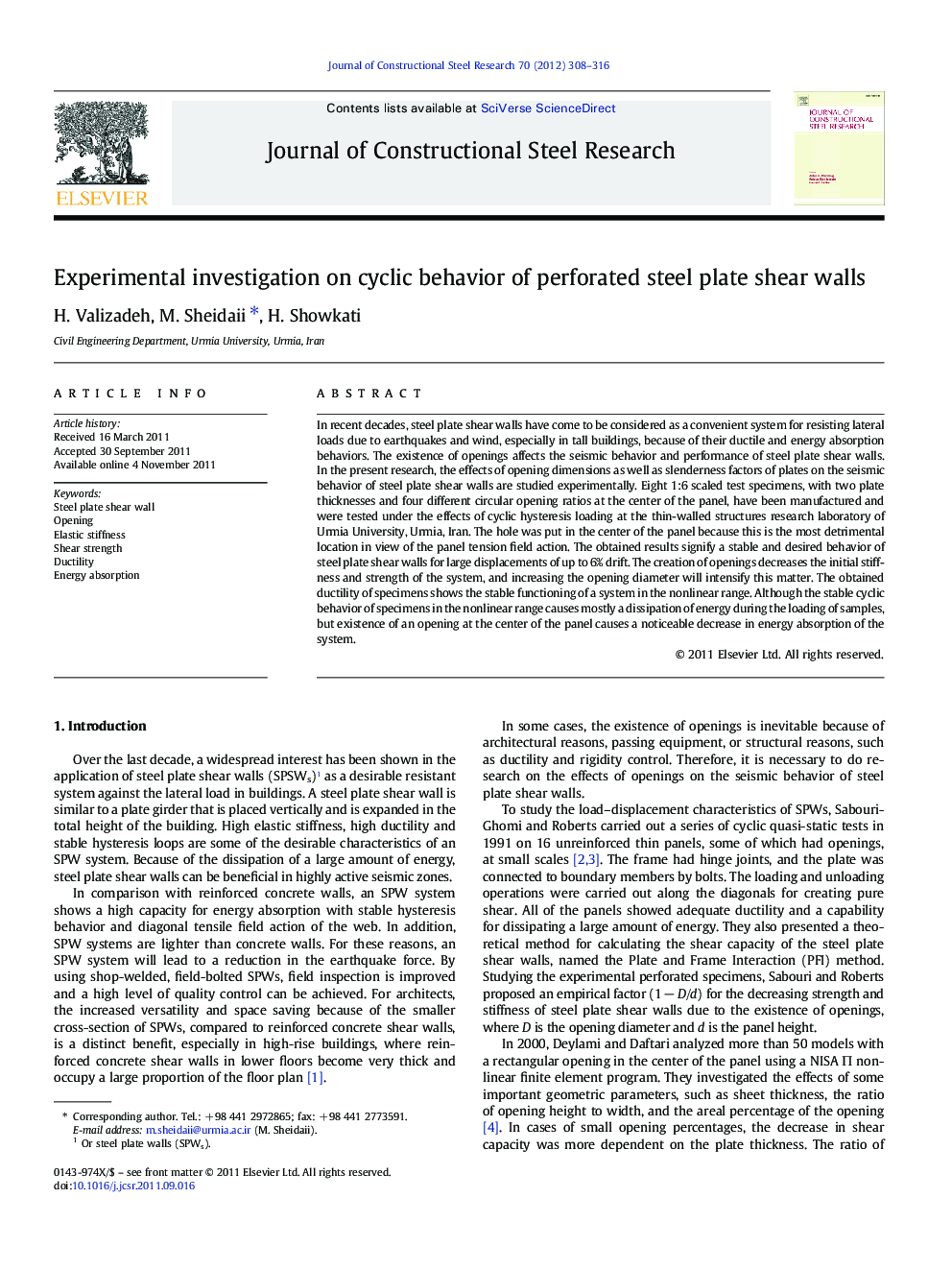| Article ID | Journal | Published Year | Pages | File Type |
|---|---|---|---|---|
| 285278 | Journal of Constructional Steel Research | 2012 | 9 Pages |
In recent decades, steel plate shear walls have come to be considered as a convenient system for resisting lateral loads due to earthquakes and wind, especially in tall buildings, because of their ductile and energy absorption behaviors. The existence of openings affects the seismic behavior and performance of steel plate shear walls. In the present research, the effects of opening dimensions as well as slenderness factors of plates on the seismic behavior of steel plate shear walls are studied experimentally. Eight 1:6 scaled test specimens, with two plate thicknesses and four different circular opening ratios at the center of the panel, have been manufactured and were tested under the effects of cyclic hysteresis loading at the thin-walled structures research laboratory of Urmia University, Urmia, Iran. The hole was put in the center of the panel because this is the most detrimental location in view of the panel tension field action. The obtained results signify a stable and desired behavior of steel plate shear walls for large displacements of up to 6% drift. The creation of openings decreases the initial stiffness and strength of the system, and increasing the opening diameter will intensify this matter. The obtained ductility of specimens shows the stable functioning of a system in the nonlinear range. Although the stable cyclic behavior of specimens in the nonlinear range causes mostly a dissipation of energy during the loading of samples, but existence of an opening at the center of the panel causes a noticeable decrease in energy absorption of the system.
► Experimental specimens of perforated SPWs have a stable S-shaped hysteresis curve. ► A central opening causes a noticeable decrease in energy absorption of the SPWs. ► Decreasing the plate thickness increases the pinching effect of the perforated SPWs. ► Increasing the opening diameter, more pinching was observed in the hysteresis loops.
